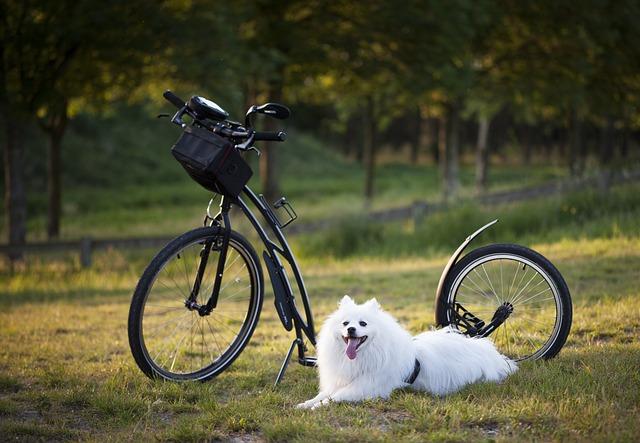When embarking on the journey of training a dog, every owner is faced with the critical decision of choosing the right approach to guide their furry friend towards desirable behavior. The two primary methods—positive reinforcement and punishment—stand at opposite ends of the training spectrum, each with its own philosophy and outcomes. Positive reinforcement, with its focus on rewarding good behavior, creates an environment of encouragement and trust, while punishment, which involves correcting undesirable actions, often relies on instilling a sense of consequence. Understanding the nuances between these approaches is essential for any pet owner aiming to cultivate a healthy, happy relationship with their canine companion. In this article, we will explore the principles, benefits, and potential drawbacks of each method, providing you with the knowledge to make informed decisions that best suit your dog’s needs and personality. Whether you’re a seasoned trainer or a first-time dog owner, our goal is to offer guidance that fosters a loving and respectful bond with your four-legged friend.
Understanding the Basics: How Dogs Learn Through Positive Reinforcement
At the heart of positive reinforcement lies a simple yet powerful principle: rewarding desirable behavior encourages dogs to repeat it. Unlike punishment, which focuses on what not to do, this approach shines a spotlight on what dogs do right. By offering treats, praise, or playtime, trainers create an environment where dogs are eager to learn and engage. This method not only strengthens the bond between humans and their canine companions but also fosters a sense of trust and security.
- Consistency is key: Rewards should be given immediately after the desired behavior to reinforce the connection.
- Choose the right rewards: Each dog is unique, so it’s essential to identify what motivates them, be it treats, toys, or affection.
- Gradual progression: Start with simple tasks and gradually increase the complexity as your dog masters each level.
By focusing on positive reinforcement, trainers not only nurture well-behaved dogs but also cultivate an enriching learning environment that respects and celebrates the unique personalities of our four-legged friends.

Creating a Reward System: Tips for Effective Training Sessions
Incorporating a well-structured reward system into your training sessions can significantly enhance your dog’s learning experience. Positive reinforcement focuses on rewarding desired behaviors, which encourages your furry friend to repeat those actions. When crafting an effective reward system, consider using a variety of rewards to maintain your dog’s interest and motivation. Here are some ideas:
- Treats: Choose small, tasty snacks that your dog loves.
- Verbal Praise: Use an enthusiastic tone to express approval.
- Playtime: Offer a quick game with a favorite toy as a reward.
- Affection: Provide a gentle pat or belly rub.
Remember, consistency is key. Punishment, on the other hand, can often lead to confusion and fear, undermining the trust between you and your dog. Instead of focusing on what not to do, direct your energy towards celebrating and reinforcing the behaviors you want to see. This approach not only strengthens your bond but also makes training a joyful experience for both you and your dog.

Why Punishment Falls Short: Recognizing the Negative Impact on Dogs
While traditional methods of training often lean on punishment to correct undesirable behaviors, it’s crucial to understand the potential negative consequences this can have on our canine companions. Punishment can lead to fear, anxiety, and confusion, which may ultimately damage the bond between dog and owner. When a dog is punished, it might not understand the reason behind the reprimand, resulting in a lack of trust and an increase in stress-related behaviors.
- Punishment can cause a dog to become fearful of the owner, leading to avoidance behaviors.
- It may increase aggression as the dog might react defensively to perceived threats.
- Often results in a breakdown of communication, as dogs may become hesitant to explore and learn.
- Long-term stress from punishment can contribute to health issues, such as a weakened immune system.
By recognizing these potential downsides, dog owners can shift towards more positive and effective training methods that foster a healthy and loving relationship. Positive reinforcement, unlike punishment, encourages dogs to repeat desired behaviors by rewarding them, creating a cycle of learning that is both enjoyable and beneficial for both the pet and the owner.

Building a Trusting Bond: Choosing Compassionate Training Techniques
When it comes to training our beloved canine companions, the approach we choose can have a profound impact on their well-being and the bond we share with them. Embracing compassionate training techniques, such as positive reinforcement, can nurture a trusting relationship while fostering a safe and encouraging environment for learning. By focusing on rewarding desired behaviors, we create a space where dogs feel motivated and enthusiastic about training. Here are some key benefits of using positive reinforcement:
- Strengthens the human-animal bond: Rewarding good behavior with treats, praise, or play helps build a foundation of trust and mutual respect.
- Encourages consistent behavior: Dogs are more likely to repeat actions that result in positive outcomes, leading to more reliable obedience.
- Reduces stress and fear: By avoiding punitive measures, dogs feel more relaxed and confident, which enhances their ability to learn.
On the other hand, using punishment can lead to unintended consequences, such as fear, anxiety, and even aggression. These adverse effects can erode the bond between owner and pet, creating a tense and unpredictable atmosphere. Instead, focusing on compassion and understanding can transform training sessions into joyful interactions that both you and your dog look forward to.

